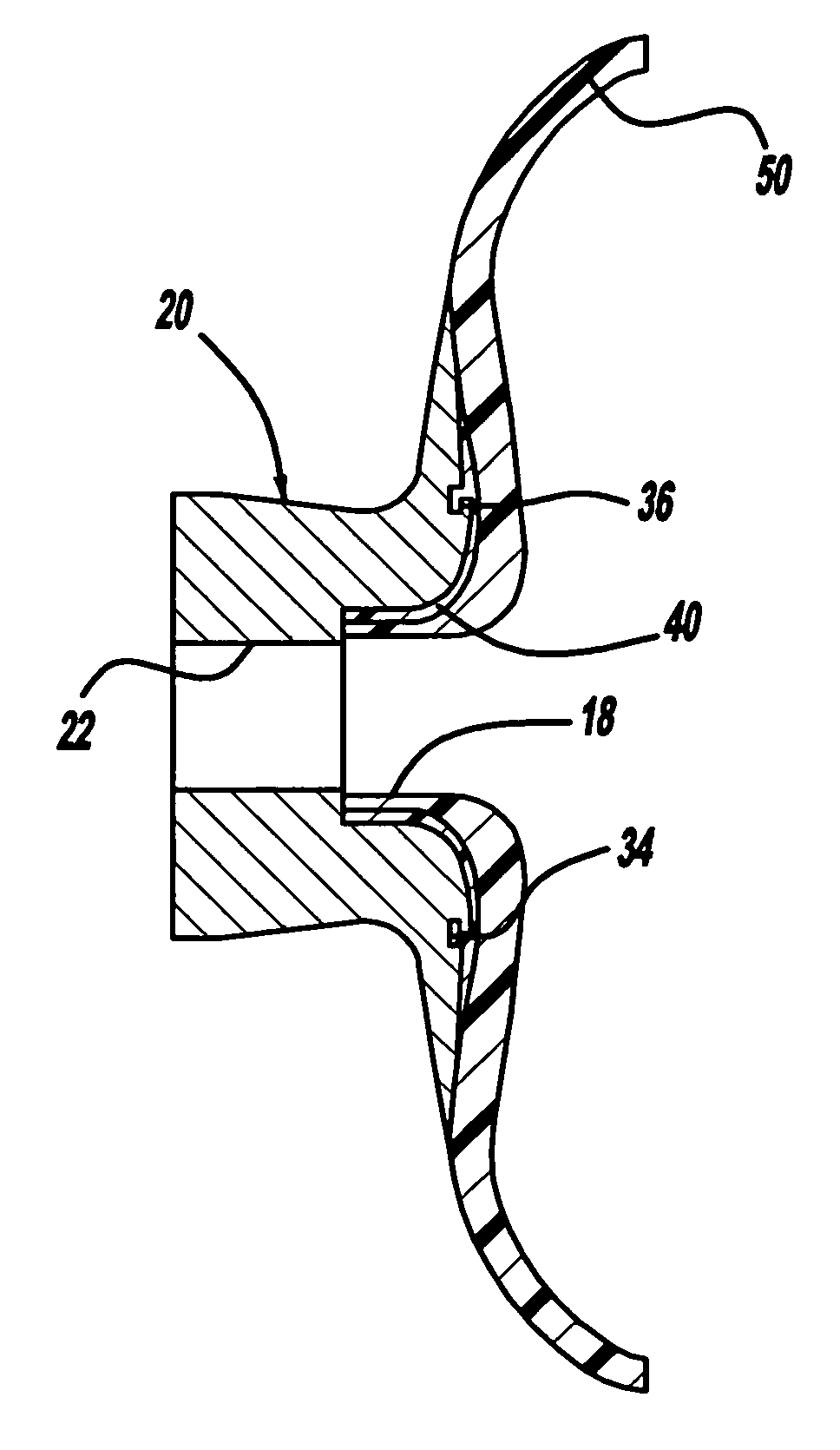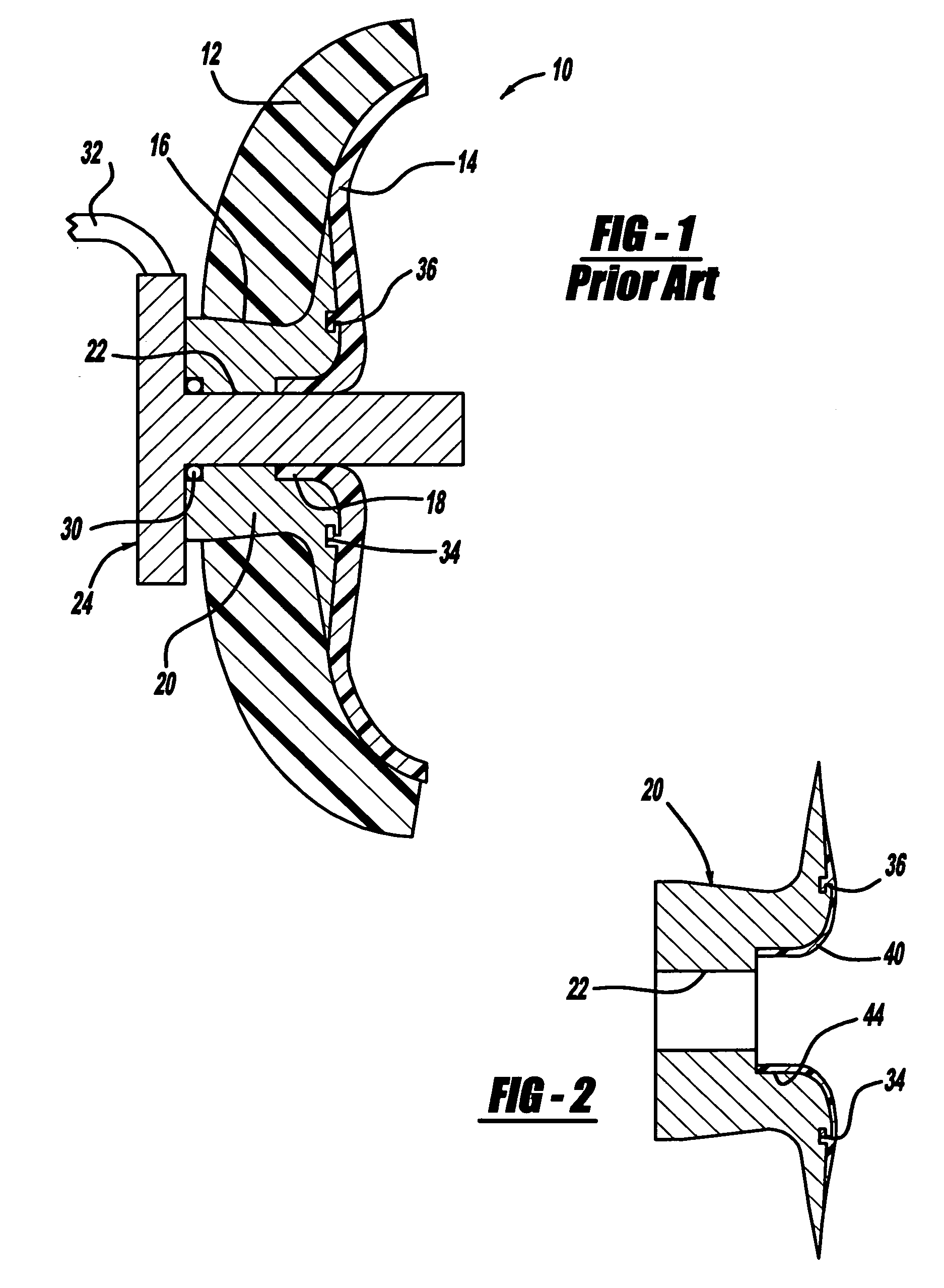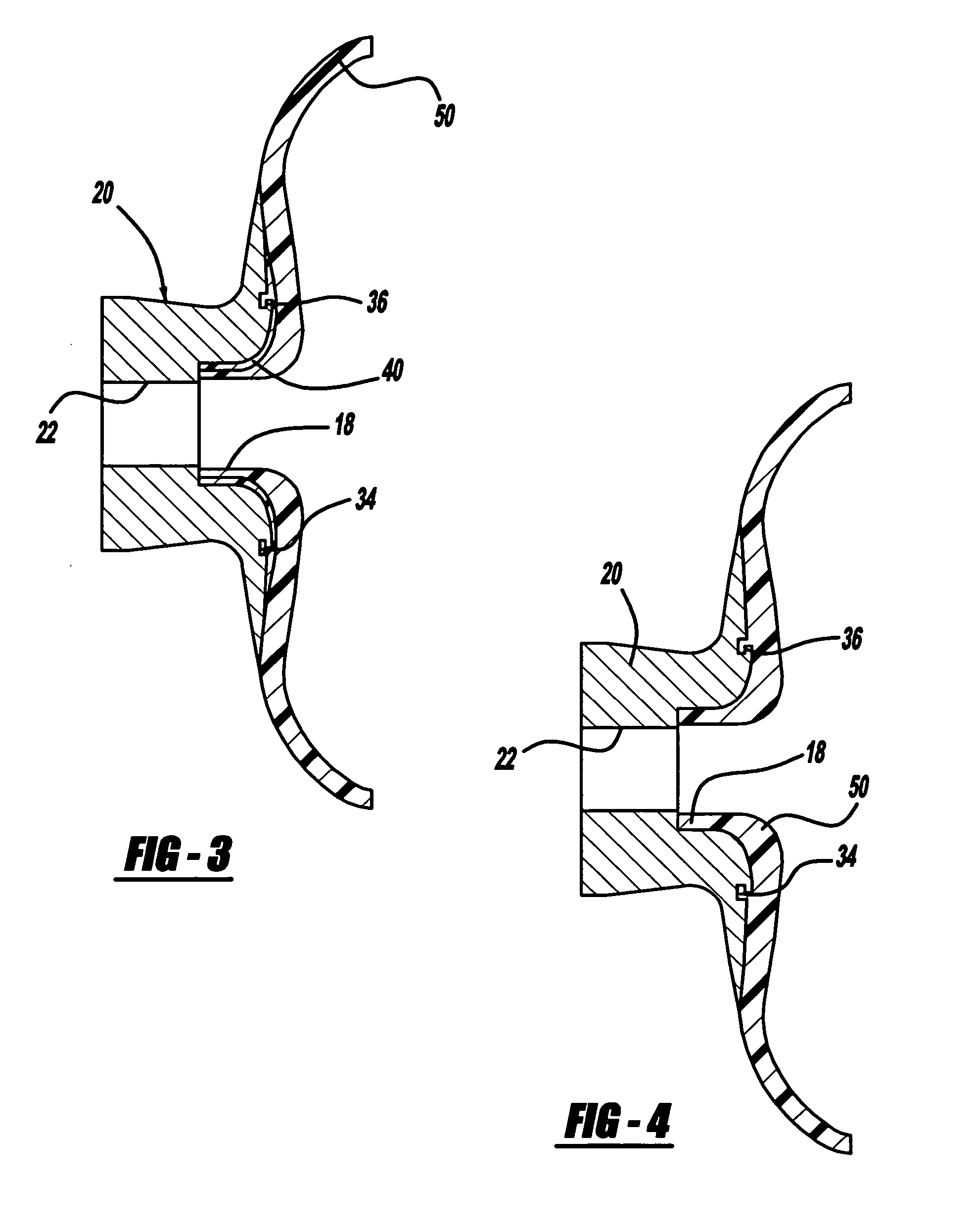Manufacturing process for hydrogen pressure tank
a technology of hydrogen pressure tank and manufacturing process, which is applied in the direction of manufacturing tools, other domestic articles, vessel construction details, etc., can solve the problems of limited effect of temperature drop, affecting the gas tight performance of the tank, and difficult production of materials that can seal hydrogen in this temperature range. achieve the effect of increasing the integrity of the seal
- Summary
- Abstract
- Description
- Claims
- Application Information
AI Technical Summary
Benefits of technology
Problems solved by technology
Method used
Image
Examples
Embodiment Construction
[0019] The following discussion of the embodiments of the invention directed to a process for manufacturing a compressed hydrogen tank is merely exemplary in nature, and is in no way intended to limit the invention or its applications or uses. Particularly, the process has an application for making a compressed hydrogen tank for storing hydrogen in a fuel cell system. However, as will be appreciated by those skilled in the art, the process has application to produce tanks other than compressed hydrogen tanks.
[0020] The following discussion of the invention discloses a process for manufacturing a compressed hydrogen gas tank to better provide seal integrity between a liner of the tank and a boss of the tank of the type discussed above with reference to FIG. 1. The discussion of the invention below uses the same reference numerals for the tank 10 above solely for ease of understanding. Generally, the process includes a two-part step for molding the liner 14 where an injection molding...
PUM
| Property | Measurement | Unit |
|---|---|---|
| pressure | aaaaa | aaaaa |
| temperature | aaaaa | aaaaa |
| temperature | aaaaa | aaaaa |
Abstract
Description
Claims
Application Information
 Login to View More
Login to View More - R&D
- Intellectual Property
- Life Sciences
- Materials
- Tech Scout
- Unparalleled Data Quality
- Higher Quality Content
- 60% Fewer Hallucinations
Browse by: Latest US Patents, China's latest patents, Technical Efficacy Thesaurus, Application Domain, Technology Topic, Popular Technical Reports.
© 2025 PatSnap. All rights reserved.Legal|Privacy policy|Modern Slavery Act Transparency Statement|Sitemap|About US| Contact US: help@patsnap.com



